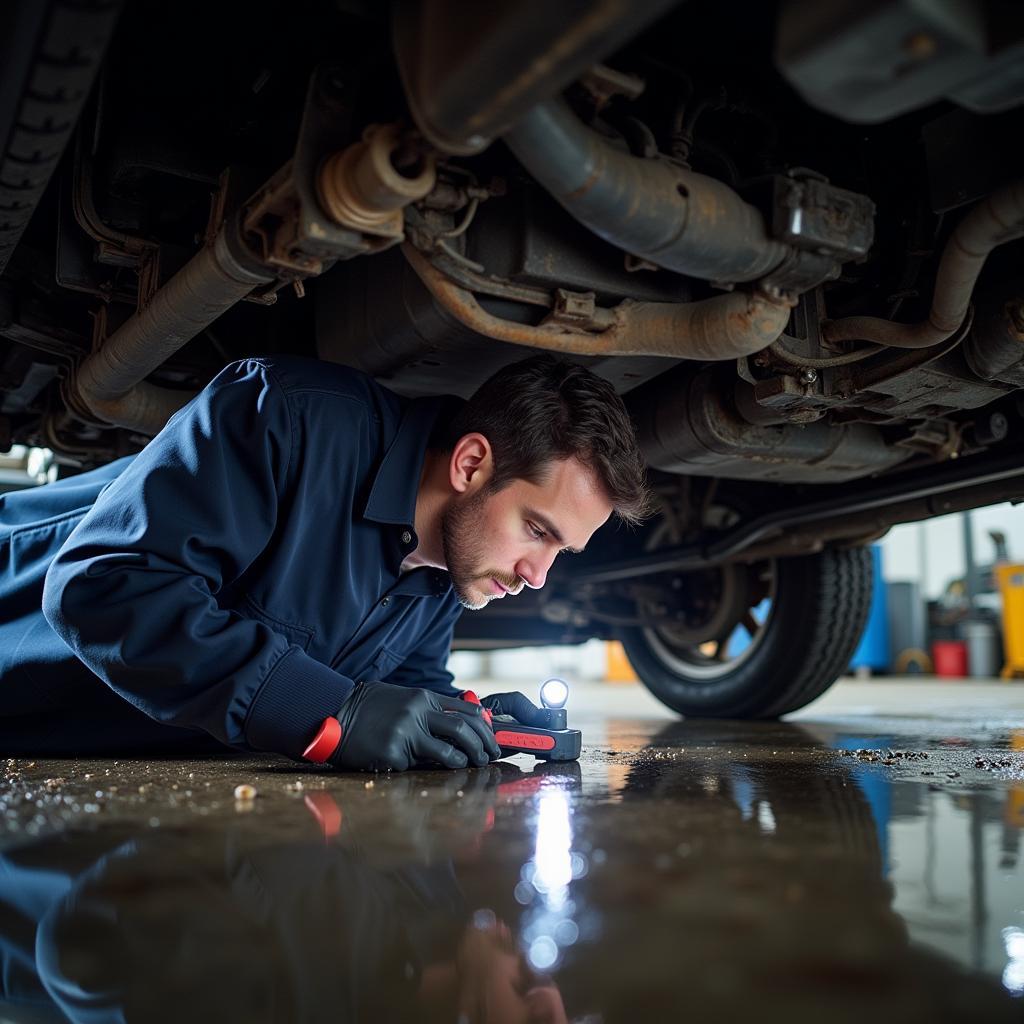Flooded cars can seem like a bargain, but they often hide a multitude of problems. Understanding the risks associated with flood-damaged vehicles is crucial before making a purchase or even considering repairs. From electrical nightmares to hidden corrosion, these vehicles can be a money pit. This article will delve into the common problems associated with flooded cars, helping you make informed decisions.
Electrical System Malfunctions: A Common Issue in Flood Damaged Cars
Water and electricity don’t mix, and a flooded car is a prime example of this. Water intrusion can wreak havoc on the intricate electrical system, causing a cascade of problems. Everything from the engine control unit (ECU) to the seemingly simple power windows can malfunction. Intermittent issues are common, making diagnosis and repair a frustrating and costly process.
- Corrosion of Wiring and Connectors: Water accelerates corrosion, damaging wiring harnesses and connectors. This leads to poor connections, short circuits, and complete system failures.
- ECU Damage: The ECU is the brain of the car, and water damage can render it useless. Replacing an ECU can be extremely expensive.
- Sensor Failures: Various sensors throughout the vehicle are susceptible to water damage, affecting everything from airbag deployment to fuel efficiency.
 Flooded Car Electrical System Damage
Flooded Car Electrical System Damage
Mechanical Mayhem: More Than Just a Wet Engine
Beyond the immediate electrical issues, flooded cars often suffer from significant mechanical problems. Water can contaminate vital fluids, damage internal engine components, and compromise the structural integrity of the vehicle.
- Engine Damage: Water entering the engine can cause catastrophic damage. Hydrolocking, where water fills the cylinders and prevents the engine from turning over, is a common and expensive problem.
- Transmission Problems: Water in the transmission can damage gears and clutches, leading to slipping, harsh shifting, and eventual failure.
- Brake System Failure: Water contamination in the brake lines can compromise braking performance, creating a serious safety hazard.
 Flood Damaged Car Engine
Flood Damaged Car Engine
Hidden Corrosion: The Silent Killer in Flood Cars
Perhaps the most insidious problem with flooded cars is hidden corrosion. Water can seep into areas that are difficult to inspect, slowly eating away at the metal. This can compromise the structural integrity of the vehicle, leading to unexpected failures down the road.
- Frame Rust: Rust on the frame can weaken the vehicle’s structure, making it less safe in a collision.
- Undercarriage Corrosion: Corrosion on the undercarriage can affect suspension components, exhaust systems, and fuel lines.
- Electrical Component Corrosion: Even if initially functional, electrical components can succumb to corrosion over time, leading to intermittent problems and eventual failure.
“Corrosion in flood-damaged cars is like a ticking time bomb,” says John Miller, a seasoned automotive engineer with over 20 years of experience. “It might not be immediately apparent, but it can lead to serious problems down the line.”
Mold and Mildew: Health Hazards in Water Damaged Cars
Beyond the mechanical and electrical issues, flooded cars can harbor mold and mildew, posing serious health risks. These fungi thrive in damp environments, and a flooded car provides the perfect breeding ground.
- Respiratory Problems: Mold and mildew spores can cause respiratory problems, especially for people with allergies or asthma.
- Allergic Reactions: Some people may experience allergic reactions to mold and mildew, including skin rashes, itching, and watery eyes.
- Musty Odor: A persistent musty odor is a telltale sign of mold and mildew growth.
 Mold Growth in Flooded Car
Mold Growth in Flooded Car
What to Do If You Suspect a Flood-Damaged Car?
If you’re considering buying a used car, it’s crucial to be vigilant about potential flood damage. “A thorough inspection by a qualified mechanic is essential,” adds Sarah Johnson, an automotive expert and consultant. “They can identify signs of flood damage that might not be obvious to the untrained eye.”
Conclusion: Navigating the Murky Waters of Flooded Cars
Buying a flooded car can be a risky proposition. From pervasive electrical issues to hidden corrosion and health hazards, the problems associated with flood damaged cars are numerous and potentially expensive. Understanding these risks is crucial for making informed decisions. Connect with AutoTipPro at +1 (641) 206-8880 or visit our office at 500 N St Mary’s St, San Antonio, TX 78205, United States, for professional guidance and support.
 Flood Damaged Car Inspection
Flood Damaged Car Inspection
FAQ
- How can I tell if a car has been flooded? Look for musty odors, water stains, and corrosion in hard-to-reach areas.
- Are flooded cars always a bad buy? While some can be salvaged, the risks are substantial, and it’s often best to avoid them.
- Can insurance cover flood damage? It depends on the policy. Comprehensive coverage usually covers flood damage, but not always.
- How much does it cost to repair a flooded car? Repairs can range from hundreds to thousands of dollars, depending on the extent of the damage.
- Is it safe to drive a flooded car? It can be extremely unsafe due to potential mechanical and electrical failures.
- What are the long-term effects of flood damage on a car? Corrosion, electrical issues, and mechanical problems can persist even after repairs.
- Should I buy a salvaged title car? A salvaged title often indicates significant damage, including flood damage, and should be approached with extreme caution.





Leave a Reply